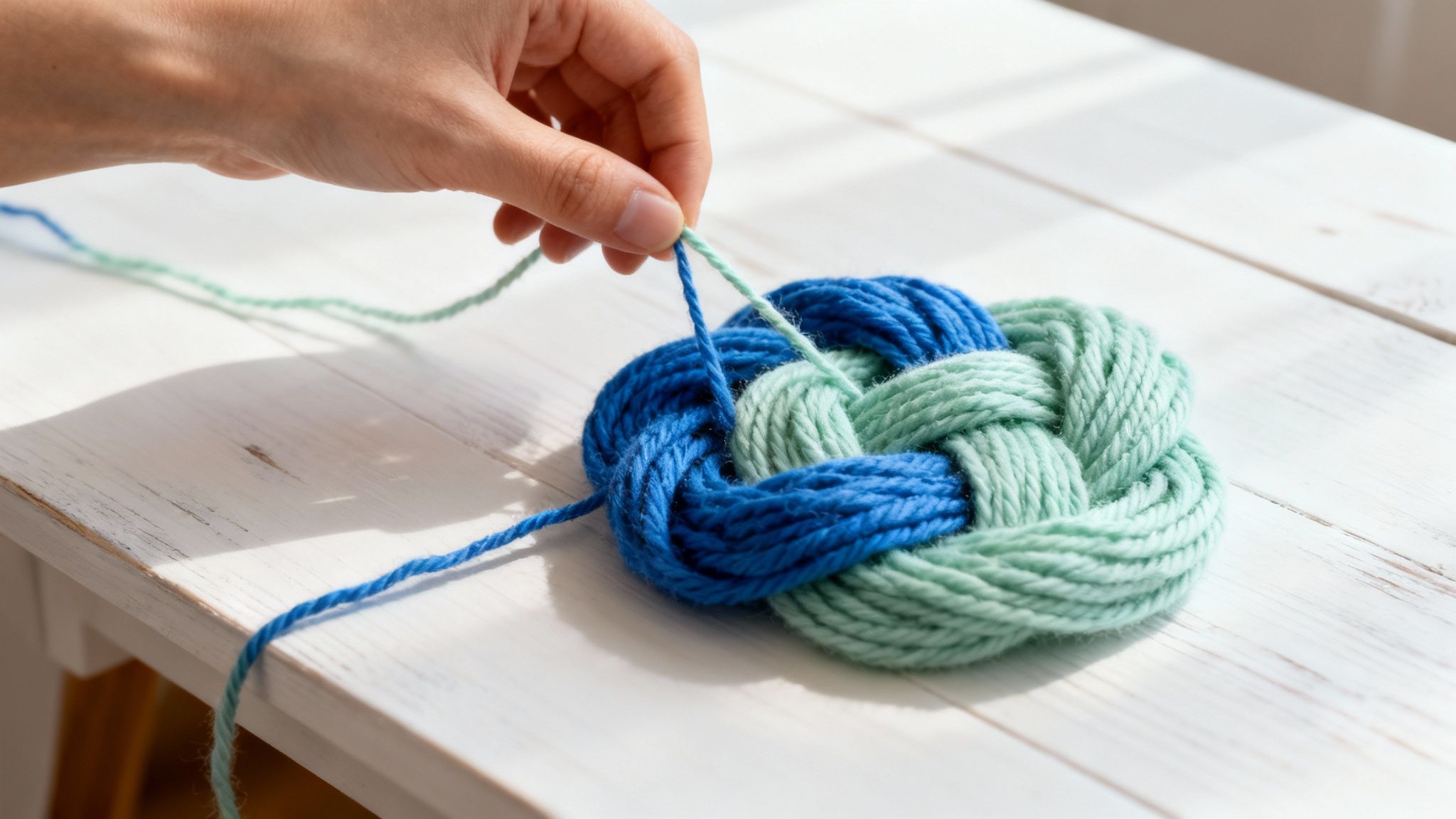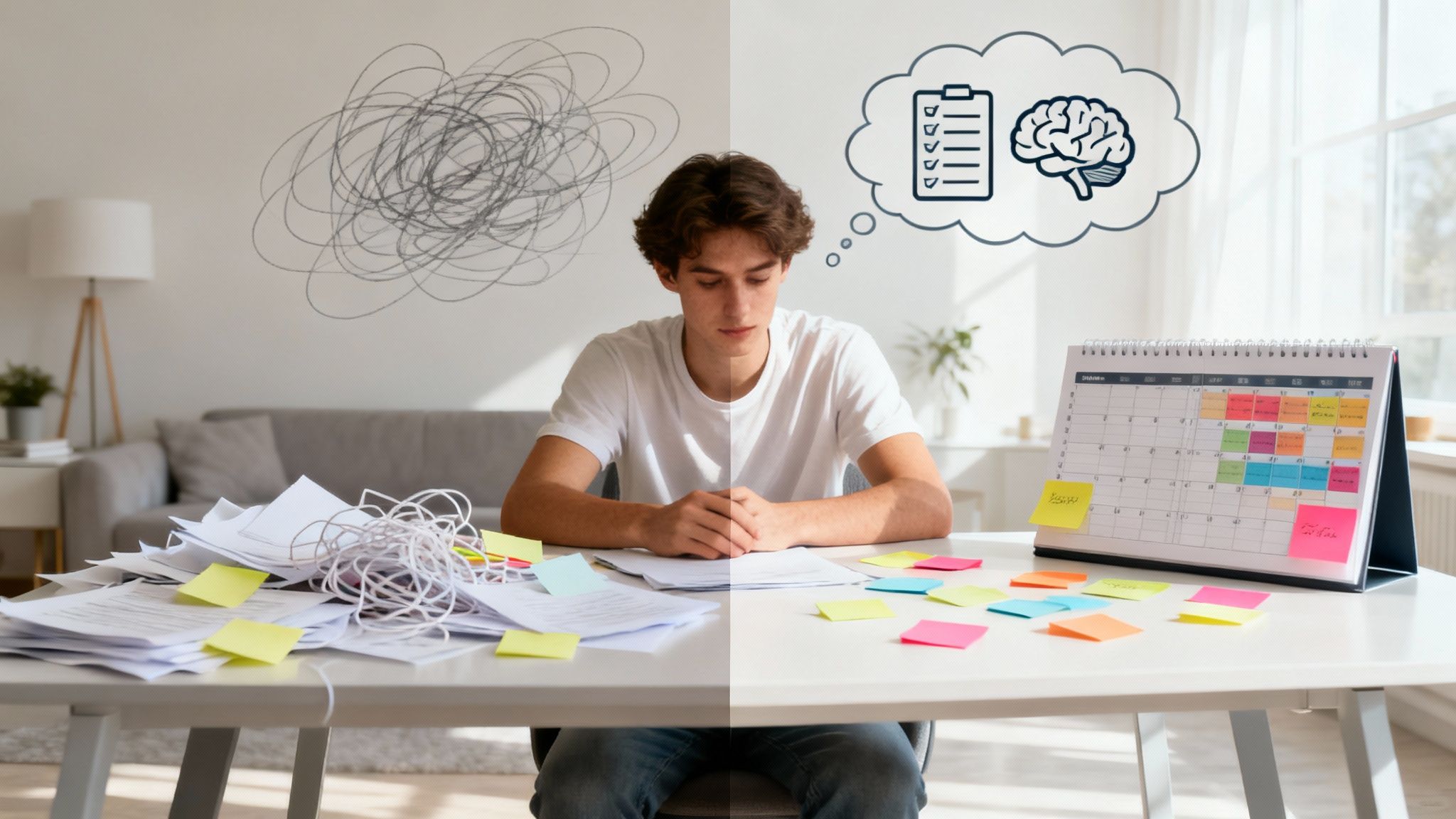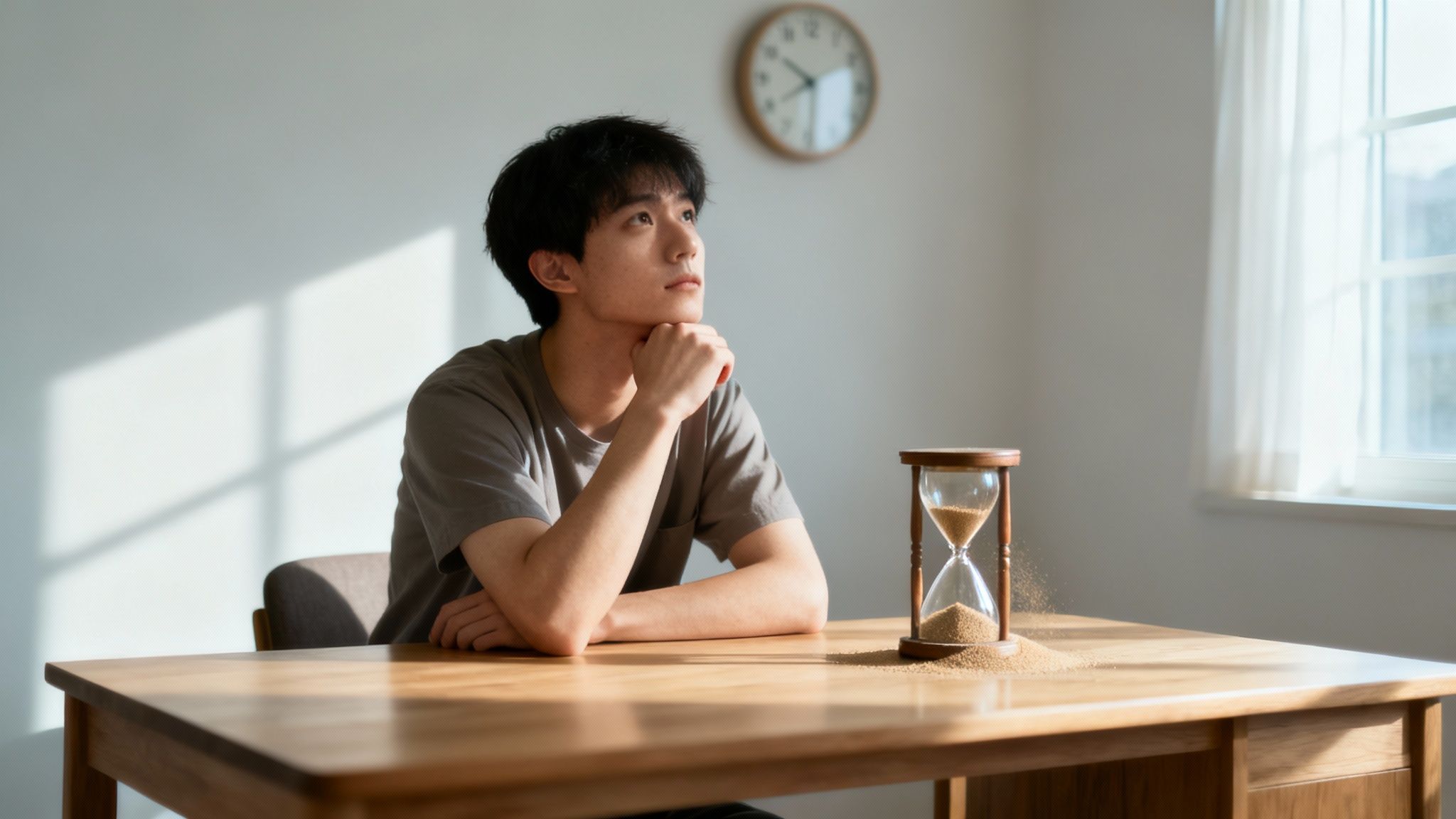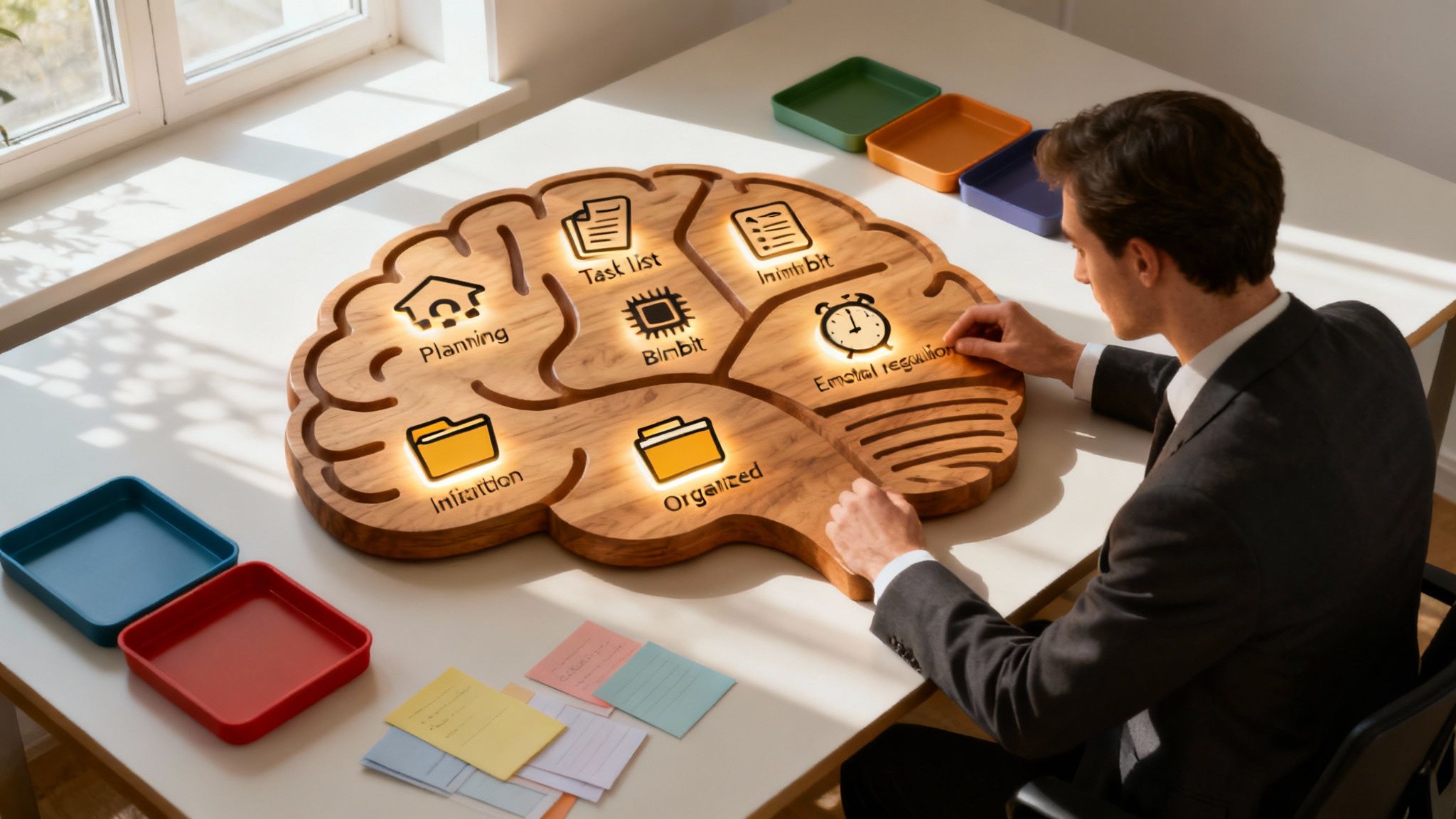Most people without ADHD only have a vague idea of what it is. Even then, the stereotype is a hyperactive young boy. Obviously, women and girls can’t have ADHD.
"Girls sit still!"
"Girls are organized!"
"Girls aren’t hyperactive!"
If you’re a woman with ADHD, you know that’s not true. For the neurotypicals in the back:
ADHD is not just a boys’ disease. ADHD does not discriminate by gender, age, or race. ADHD manifests a little differently in women, and presents unique challenges.
Let’s discuss.
Looking for something else?
- PMDD, estrogen, and dopamine: how ADHD is affected by severe PMS
- ADHD in girls and women: misdiagnosed and misunderstood
ADHD in men vs. ADHD in women
- Women are less likely than men to be diagnosed in childhood (women often don’t find out they have ADHD until college or after their kid gets diagnosed)
- Common ADHD comorbidities in women include compulsive overeating, alcohol or drug abuse, depression, and anxiety
- Women with ADHD have more psychological distress and poorer self-image than men
- Men and women have similar rates of depression and anxiety (it’s not all different! It’s still ADHD!)
- Inattentive type ADHD (ADHD-PI) is more common in women, while hyperactive/impulsive type is typically more common in men
Common manifestations of ADHD in women:
- Feeling easily overwhelmed and upset
- Low self-esteem
- Never-ending clutter at home, work, and in the car
- Excessive talking and/or interrupting
- Disorganization
- Struggles with paying bills and other “adulting” tasks
The good news
You’re not alone.
Many women experience profound relief when they learn they have ADHD.
“Whoa,” you may think, “I’m not crazy or stupid or lazy or [insert-negative-adjective-here], I’m just not neurotypical!”
If you're a woman diagnosed with (or suspect) ADHD, you’re in good company. Many smart, accomplished, successful women have ADHD. It makes life a little harder, but it doesn’t mean your life or career are hopeless. Now that you know what your brain is working with, you can start shifting your life to work around it.
The bad news
Just kidding! There is no bad news.
You already know how ADHD affects your life, you don’t need me to woman-splain it.
How to thrive with ADHD as a woman
Here are some methods for managing your ADHD that you can start right now:
1. Bullet journaling
I have been a Bullet Journal (BuJo) evangelist for five years, and I’ll never go back to my old ways (e.g. forgetting appointments, losing to-do lists). The beauty of a Bullet Journal (BuJo) lies in its customization. Check out the BuJo website for detailed instructions on this method.
Basically, you design your own planner, one page at a time; keep lists (to-dos, movies to watch, books to read, etc.); make daily/weekly/monthly calendars; whatever works for your brain.
Make it simple, make it complicated. It’s your BuJo.
💡Pro Tip! If you think of something urgent while away from your BuJo, send yourself a quick email. This has saved me many times as a freelancer with ADHD. Say I’m running errands and a client calls with a new deadline. I email myself the subject “Women & ADHD article due Monday,” then get back to errands. And this task waits for me until it’s time to check my email.
2. Exercise
Moving your body can relieve symptoms of many mental health conditions, including ADHD, depression, and anxiety. Exercise can alleviate ADHD symptoms such as anxiety, poor impulse control, and working memory due to endorphins - the chemicals released during exercise that can reduce pain and boost mood.1
The best way to make your new routine last is by finding exercise you love. Try several routines until you find what works for you: hiking, walking, swimming, going to the gym, martial arts. The best exercise is the one you will do regularly.
Start slow, and remember that something is always better than nothing.
3. Ask for support
Being honest about your needs and limitations reduces feelings of rejection and overwhelm.
Do you envy your bestie’s flawless home office organization? Ask her to show you her ways!
Want to stop interrupting but just can’t? Ask your partner to gently call you out when you do it. Remember that your loved ones, well, love you. Let them help you however they can.
If you suspect you have ADHD but haven’t been diagnosed, consider looking into that! If you have insurance, ask your primary care doctor for a referral, or call your provider for psychiatrist referrals. Getting the diagnosis will help you access appropriate treatment and accommodations.
4. Don't "should" yourself
Being neurodivergent means your brain works a little differently. Instead of fighting these differences and trying to be like everyone else, embrace your uniqueness, and when you can, mold your life around your individual needs.
There are some things you have to do (pay rent, go to the dentist), and some things you think you should do (have a spotless car, cook all your meals from scratch).
It’s okay if spotless housekeeping or cooking aren’t your strong suits. There’s nothing wrong with a non-Pinterest-worthy house, eating frozen meals, or being a night owl. Accept yourself and your ways, work on what needs work, and try not to focus on others’ expectations and opinions.
Do you struggle to concentrate at a noisy office?
See if you can work from home. You might even be entitled to ADHD work accommodations from the Americans with Disabilities Act (ADA)
Is keeping your desk clean hopeless?
Instead of beating yourself up about it, why not accept that you thrive in a cluttered environment? It might make your neat friend cringe, but it ain’t their desk. Focus on necessary cleaning like personal hygiene, waste disposal, and not leaving food out. Scattered papers and clothes are okay if they feel okay to you.
5. Sleep
Okay, I know what you’re thinking: good sleep is but a pipe dream. I used to feel that way! I didn’t take sleep seriously until I hit 30 and my body begged me to quit running on fumes and sleep more than four hours a night. People with ADHD tend to get less sleep, struggle to fall asleep (and stay asleep), and are at a higher risk of having a sleep disorder.
Racing thoughts, anxiety, and sudden nighttime bursts of energy are all common in those of us with ADHD. Lack of sleep can exacerbate behaviors like impulsivity and mood dysregulation.
Commit to your health by committing to your sleep. That means doing tough things: no phones/screens in bed, going to bed and getting up around the same time, and sleeping for 7-9 hours a night.
Try reading a book instead of scrolling social media. Take a bubble bath. Use your phone’s bedtime and wind-down feature to remind you when to call it a night. Once you start getting good sleep, you’ll realize why so many other people seem to take it so seriously.
(hint: because it makes your life waaayyy better)
Final thoughts
Instead of thinking of ADHD as a disorder, I like to think of it as a brain difference. Once you figure out how to manage this difference, you can lead a happy, healthy, active life.
Though women with ADHD are often misdiagnosed or diagnosed with ADHD later in life, things are improving. It’s the best time in history to be a woman with ADHD, since we know so much more than we did just a decade or two ago.
ADHD in women is real, and the struggles are real. But the solutions are also real! You can find workarounds for your struggles with a little hard work, commitment, and patience. Start small, experiment, keep what works, and throw out the rest.
I’d wish you luck, but you don’t need luck. You’re strong, capable, and ready for some relief. May this humble article nudge you into a calmer, happier, healthier life.









